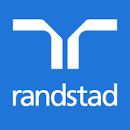
Randstad North America Behavioral Interview — Data Analyst (Engineering)
Purpose: Assess how a Data Analyst operates in Randstad’s people-first, client-centric, compliance-heavy environment, aligned to our Human Forward ethos and core values: to know, to serve, to trust; simultaneous promotion of all interests; and transparency. This behavioral interview emphasizes communication with non-technical stakeholders (recruiters, account managers, client contacts), data integrity and SLAs, ethical and compliant data use, and measurable business impact in staffing/workforce solutions contexts (RPO/MSP, VMS/ATS reporting). What this interview covers at Randstad: - Cultural alignment: Human Forward mindset, DEI commitment, service orientation, ownership, and working with urgency while preserving quality. - Stakeholder partnership: Collaborating with recruiters, sales, delivery teams, program managers, and client executives; converting ambiguous talent or operational questions into clear analytics. - Data integrity in high-velocity ops: Building trust through reproducible analyses, source-of-truth thinking, auditability, and proactive QA for SLAs and client reports. - Communication and storytelling: Turning KPIs into actionable narratives (e.g., time-to-fill, submittal-to-hire, fill rate, talent diversity metrics, attrition, margin/markup compliance) for decision-making. - Ethical, compliant analytics: Respecting confidentiality, data privacy (e.g., GDPR/CCPA considerations), bias mitigation, and responsible use of algorithms/automation in hiring workflows. - Change and ambiguity: Navigating shifting client priorities, evolving data definitions, integrations (VMS/ATS/CRM), and cross-border teams in the U.S. and Canada. Suggested structure and timing (approx. 60 minutes): - 0–5 min: Introductions, brief on role context (supporting client programs, SLAs, reporting cadence). - 5–15 min: Stakeholder partnership & communication deep-dive. - 15–30 min: Problem solving & data quality scenario walkthrough. - 30–45 min: Client-facing storytelling & impact; compliance/ethics probes. - 45–55 min: Adaptability & change management; learning mindset. - 55–60 min: Candidate questions about team, tools, cadence, and expectations. Competency areas and what good looks like: - Client-centric communication: Uses plain language, frames trade-offs, sets expectations, and tailors narrative to recruiters vs. executives; references SLAs and business outcomes. - Data integrity & QA: Demonstrates validation steps, version control, documentation, root-cause analysis of bad data (duplicate candidates, mis-coded job families, timekeeping anomalies). - Outcome orientation: Connects analysis to measurable improvements (e.g., reduced time-to-submit, improved fill rate, optimized sourcing channels, margin protection). - Ownership & urgency: Prioritizes under pressure, escalates early, manages dependencies across teams and tools. - Ethics & compliance: Proactively flags risk, limits sensitive data exposure, considers bias in sourcing/selection metrics. Behavioral prompts (use STAR/CAR): 1) Tell me about a time you translated a vague talent or hiring operations question into a clear analysis and drove a decision with a client team. 2) Describe a situation where you discovered data integrity issues in ATS/VMS extracts that could jeopardize a client report or SLA. What did you do and what changed? 3) Give an example of simplifying a complex dashboard (e.g., fill rates by market/skill) for non-technical stakeholders so they took action. 4) Share a time you balanced speed vs. accuracy under a tight reporting deadline. How did you communicate risk and protect trust? 5) Walk me through an instance where your analysis surfaced a potential fairness or bias concern. How did you handle it and what controls resulted? 6) Tell me about influencing a recruiter or account manager to adopt a new metric or reporting cadence they initially resisted. 7) Describe when shifting client priorities forced you to re-scope work midstream. How did you reset expectations and deliver value? 8) Give an example of building/maintaining documentation that improved handoffs or audit readiness. 9) Describe a time you connected market/talent data to pricing or workforce mix recommendations (e.g., bill rate, location strategy) that improved outcomes. 10) Tell me about partnering with multiple functions (sales, delivery, program office) to standardize KPI definitions across systems. 11) Share an example where you automated a repetitive reporting task while ensuring version control and data lineage. 12) Describe a situation where you learned a new tool or domain quickly to meet a client need and how you measured success. Evaluation rubric (1–5 per area; 3 = meets, 5 = exceptional): - Communication & storytelling: Clarity, audience fit, decision orientation, defensibility. - Data rigor: Concrete QA steps, lineage, reproducibility, handling of missing/dirty data. - Business impact: Quantified outcomes tied to staffing KPIs or client SLAs. - Collaboration & influence: Cross-functional buy-in, constructive conflict, reliability. - Ethics & compliance: Proactive risk identification, bias awareness, privacy-by-design behaviors. Red flags: - Blames "bad data" without root-cause or remediation steps. - Over-indexes on tools over business outcomes; cannot explain trade-offs. - Dismisses privacy/compliance or DEI considerations as "not my job." - No examples of stakeholder alignment, escalation, or expectation management. Interviewer notes template (use during scoring): - Context and stakeholders involved - Problem statement and data sources - Actions taken (methods, QA, comms) - Outcome (KPI movement, client feedback) - Risks managed (privacy, bias, SLA) - Follow-ups and development areas
8 minutes
Practice with our AI-powered interview system to improve your skills.
About This Interview
Interview Type
BEHAVIOURAL
Difficulty Level
3/5
Interview Tips
• Research the company thoroughly
• Practice common questions
• Prepare your STAR method responses
• Dress appropriately for the role